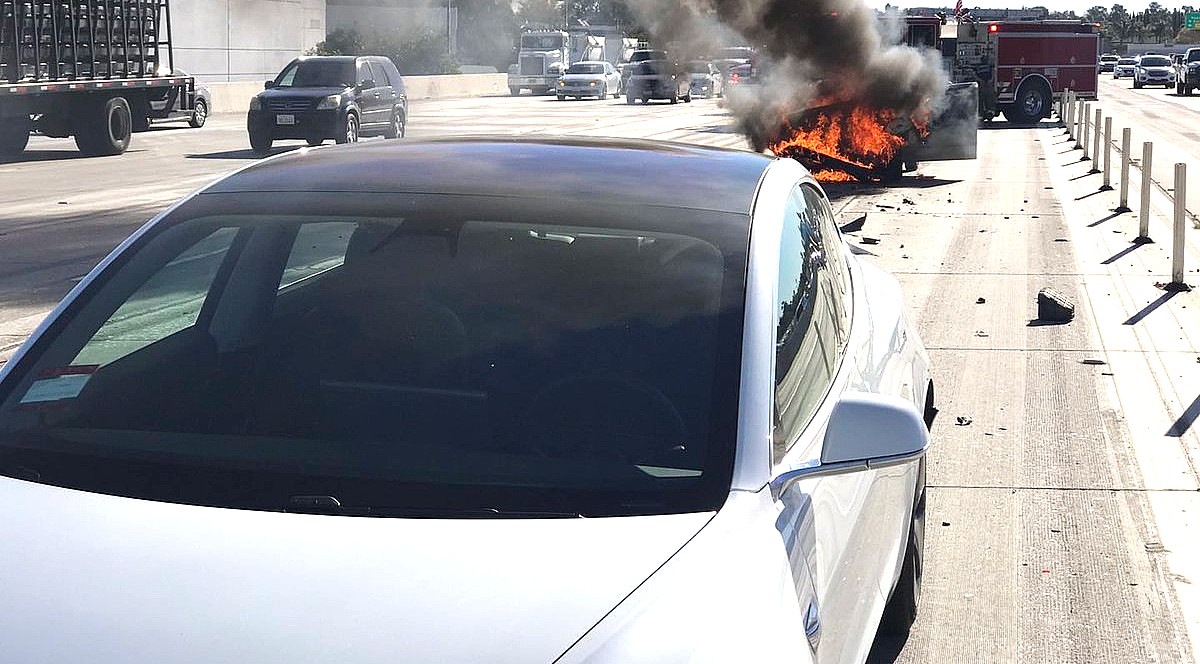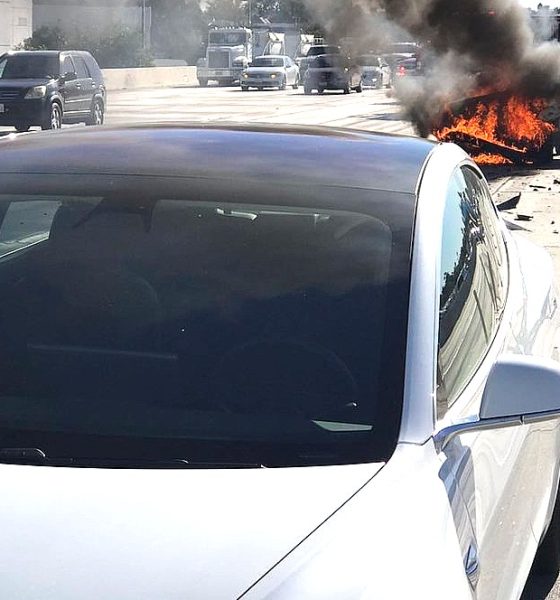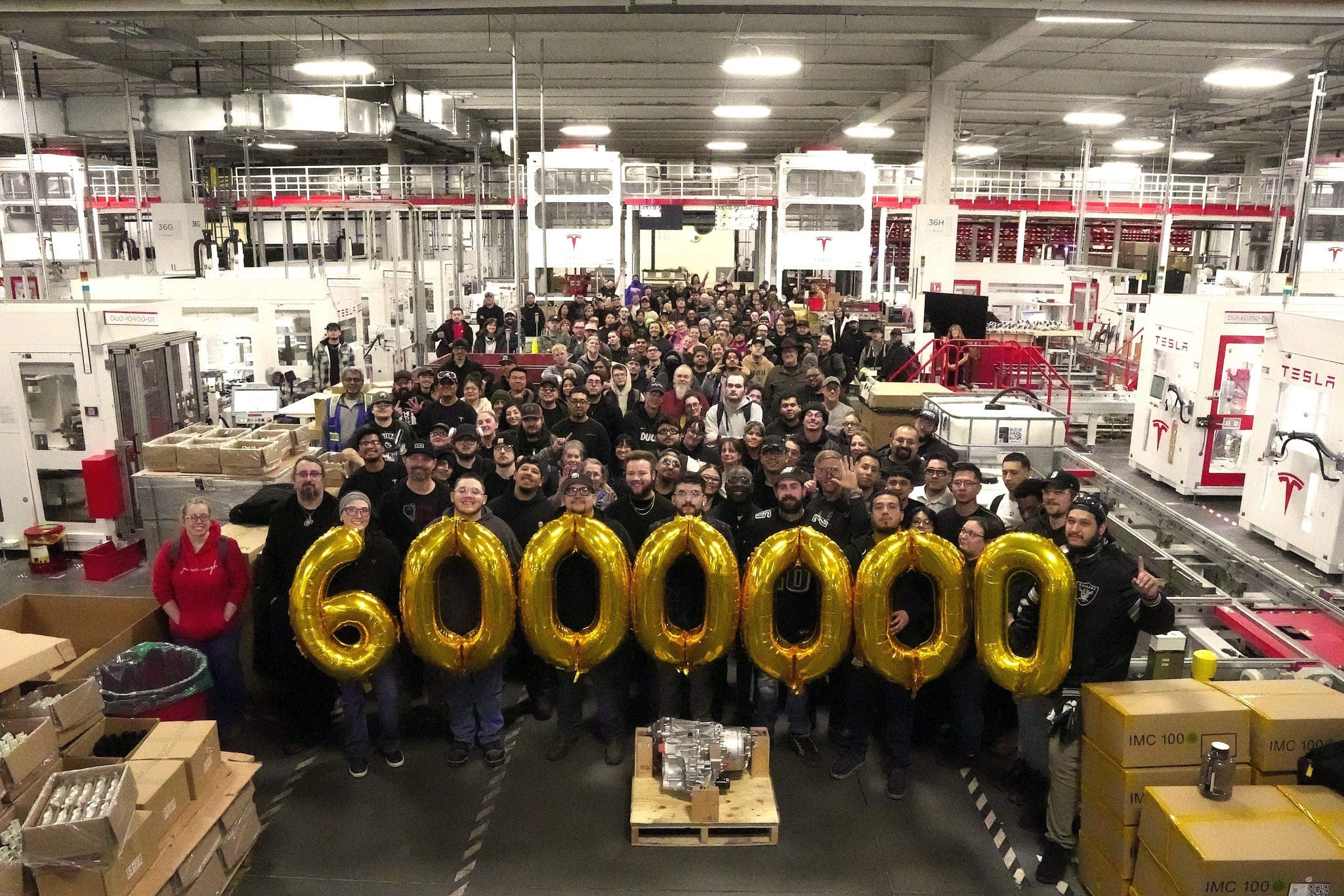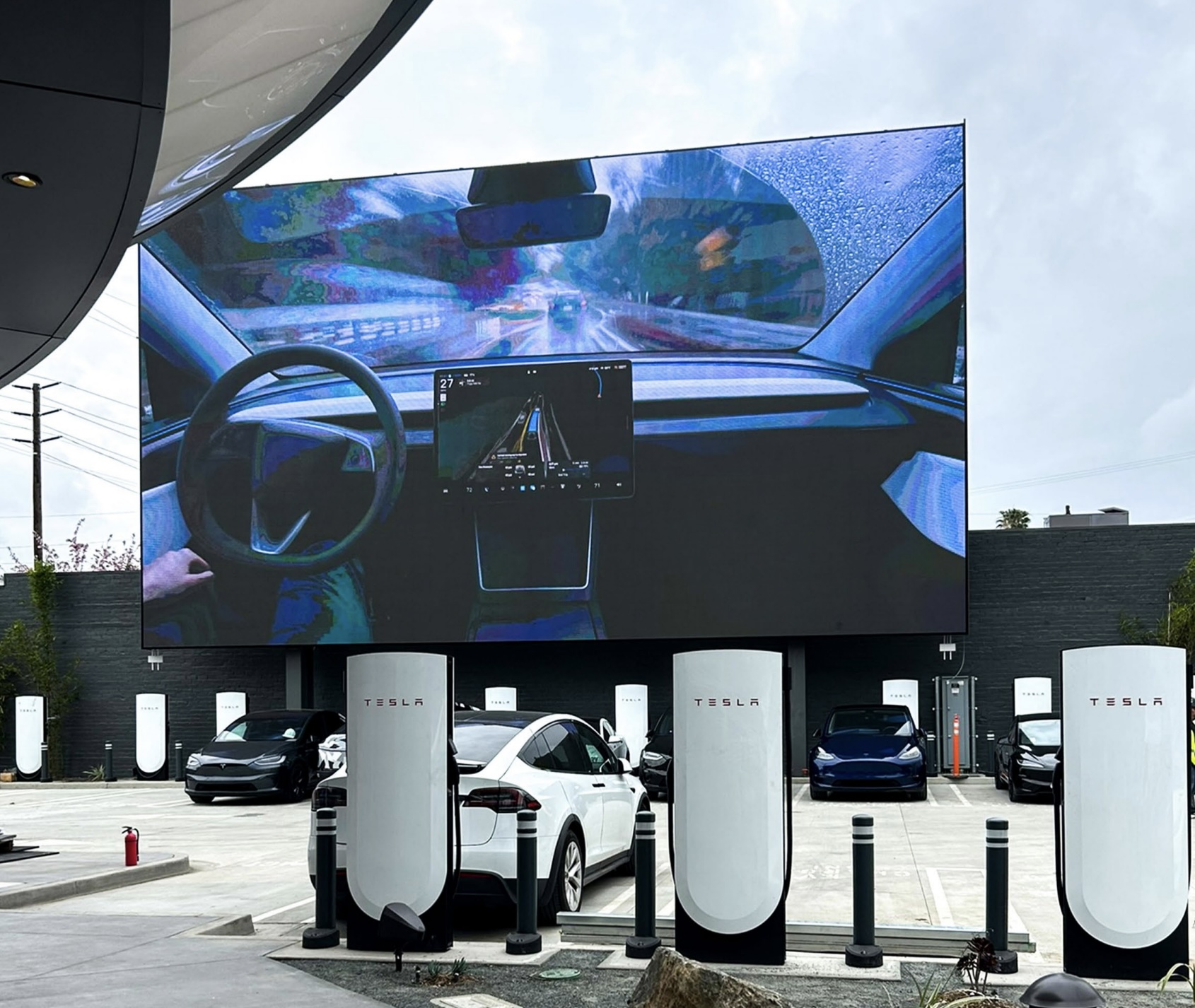

News
Tesla vehicles are 8x less likely to be involved in fires, shows latest safety report
Tesla has released its vehicle safety report for the second quarter of 2019. Similar to previous quarters, the report showed that Teslas operating on Autopilot are less likely to meet accidents on the road compared to vehicles operating without the driver-assist system enabled. Tesla’s report this quarter also included statistics on vehicle fires for the first time.
Fires involving Teslas are quite rare, with some quarters having recorded no vehicle fires at all. This, according to Tesla, results in some challenges, as an increase from one fire per quarter to two fires per quarter would result in a raise of 100%. Tesla has thus stated that it will provide annual vehicle fire data to avoid a misrepresentation of numbers and assure a meaningful comparison to the industry average.
The electric car maker’s data shows that between 2012-2018, there was approximately one Tesla vehicle fire for every 170 million miles traveled. Considering that the National Fire Protection Association (NFPA) and the US Department of Transportation record one vehicle fire for every 19 million miles traveled, Tesla’s figures make its electric cars over eight times less likely to be involved fires.
It should also be noted that Tesla’s vehicle fire statistics for 2012-2018 are not exclusive to incidents where the electric cars actually catch fire. Instead, Tesla’s data includes incidents resulting from structure fires, arson, and several other factors unrelated to the vehicles themselves.
Tesla’s Q2 2019 vehicle safety report also showed one accident for every 3.27 million miles driven with Autopilot engaged. Vehicles without Autopilot but have Tesla’s active safety features engaged, on the other hand, recorded one accident for every 2.19 million miles driven. Cars operating with no Autopilot and active safety features enabled recorded one accident every 1.41 million miles.
These figures are an improvement to Tesla’s first-quarter results, when the company recorded one accident for every 2.87 million miles driven on Autopilot, 1.76 million miles driven with active safety features but no Autopilot, and 1.26 million miles driven with no Autopilot and active safety features enabled. These results, while below the figures for the second quarter, are still notably superior to the NHTSA’s data, which currently stand at one accident for every 498,000 miles driven.
Tesla’s electric cars are among the safest vehicles on the road. The Model 3, for example, has earned stellar safety ratings from both the NHTSA and the Euro-NCAP, where the electric sedan set a new benchmark for safety. The Model 3 was granted a perfect 5-Star rating by the Euro NCAP in all four of its safety tests’ categories: Adult Occupant Protection, which tests how the vehicle protects its driver and passenger; Child Occupant Protection, which gauges the protection of younger occupants; Vulnerable Road Users, which tests a vehicle’s safety features for cyclists and pedestrians; and Safety Assist, which evaluates a car’s active safety capabilities.
Tesla’s Q2 2019 vehicle safety report could be read below.
Accident Data
In the 2nd quarter, we registered one accident for every 3.27 million miles driven in which drivers had Autopilot engaged. For those driving without Autopilot but with our active safety features, we registered one accident for every 2.19 million miles driven. For those driving without Autopilot and without our active safety features, we registered one accident for every 1.41 million miles driven. By comparison, NHTSA’s most recent data shows that in the United States there is an automobile crash every 498,000 miles.
Vehicle Fire Data
Tesla vehicle fires are exceptionally rare events, and in some cases, there have been zero Tesla vehicle fires in a quarter. That means that an increase from one fire per quarter to two per quarter represents an increase of 100%. In order to avoid misinterpretation of these numbers and provide a meaningful comparison to industry data, Tesla will publish an update to vehicle fire data annually.
From 2012 – 2018, there has been approximately one Tesla vehicle fire for every 170 million miles traveled. By comparison, data from the National Fire Protection Association (NFPA) and U.S. Department of Transportation shows that in the United States there is a vehicle fire for every 19 million miles traveled.
In order to provide an apt comparison to NFPA data, Tesla’s data set includes instances of vehicle fires caused by structure fires, arson, and other things unrelated to the vehicle, which account for about 15% of Tesla vehicle fires over this time period.

Elon Musk
Starlink achieves major milestones in 2025 progress report
Starlink wrapped up 2025 with impressive growth, adding more than 4.6 million new active customers and expanding service to 35 additional countries, territories, and markets.

Starlink wrapped up 2025 with impressive growth, adding more than 4.6 million new active customers and expanding service to 35 additional countries, territories, and markets. The company also completed deployment of its first-generation Direct to Cell constellation, launching over 650 satellites in just 18 months to enable cellular connectivity.
SpaceX highlighted Starlink’s impressive 2025 progress in an extensive report.
Key achievements from Starlink’s 2025 Progress
Starlink connected over 4.6 million new customers with high-speed internet while bringing service to 35 more regions worldwide in 2025. Starlink is now connecting 9.2 million people worldwide. The service achieved this just weeks after hitting its 8 million customer milestone.
Starlink is now available in 155 markets, including areas that are unreachable by traditional ISPs. As per SpaceX, Starlink has also provided over 21 million airline passengers and 20 million cruise passengers with reliable high-speed internet connectivity during their travels.
Starlink Direct to Cell
Starlink’s Direct to Cell constellation, more than 650 satellites strong, has already connected over 12 million people at least once, marking a breakthrough in global mobile coverage.
Starlink Direct to Cell is currently rolled out to 22 countries and 6 continents, with over 6 million monthly customers. Starlink Direct to Cell also has 27 MNO partners to date.
“This year, SpaceX completed deployment of the first generation of the Starlink Direct to Cell constellation, with more than 650 satellites launched to low-Earth orbit in just 18 months. Starlink Direct to Cell has connected more than 12 million people, and counting, at least once, providing life-saving connectivity when people need it most,” SpaceX wrote.
News
Tesla Giga Nevada celebrates production of 6 millionth drive unit
To celebrate the milestone, the Giga Nevada team gathered for a celebratory group photo.

Tesla’s Giga Nevada has reached an impressive milestone, producing its 6 millionth drive unit as 2925 came to a close.
To celebrate the milestone, the Giga Nevada team gathered for a celebratory group photo.
6 million drive units
The achievement was shared by the official Tesla Manufacturing account on social media platform X. “Congratulations to the Giga Nevada team for producing their 6 millionth Drive Unit!” Tesla wrote.
The photo showed numerous factory workers assembled on the production floor, proudly holding golden balloons that spelled out “6000000″ in front of drive unit assembly stations. Elon Musk gave credit to the Giga Nevada team, writing, “Congrats on 6M drive units!” in a post on X.
Giga Nevada’s essential role
Giga Nevada produces drive units, battery packs, and energy products. The facility has been a cornerstone of Tesla’s scaling since opening, and it was the crucial facility that ultimately enabled Tesla to ramp the Model 3 and Model Y. Even today, it serves as Tesla’s core hub for battery and drivetrain components for vehicles that are produced in the United States.
Giga Nevada is expected to support Tesla’s ambitious 2026 targets, including the launch of vehicles like the Tesla Semi and the Cybercab. Tesla will have a very busy 2026, and based on Giga Nevada’s activities so far, it appears that the facility will be equally busy as well.
News
Tesla Supercharger network delivers record 6.7 TWh in 2025
The network now exceeds 75,000 stalls globally, and it supports even non-Tesla vehicles across several key markets.

Tesla’s Supercharger Network had its biggest year ever in 2025, delivering a record 6.7 TWh of electricity to vehicles worldwide.
To celebrate its busy year, the official @TeslaCharging account shared an infographic showing the Supercharger Network’s growth from near-zero in 2012 to this year’s impressive milestone.
Record 6.7 TWh delivered in 2025
The bar chart shows steady Supercharger energy delivery increases since 2012. Based on the graphic, the Supercharger Network started small in the mid-2010s and accelerated sharply after 2019, when the Model 3 was going mainstream.
Each year from 2020 onward showed significantly more energy delivery, with 2025’s four quarters combining for the highest total yet at 6.7 TWh.
This energy powered millions of charging sessions across Tesla’s growing fleet of vehicles worldwide. The network now exceeds 75,000 stalls globally, and it supports even non-Tesla vehicles across several key markets. This makes the Supercharger Network loved not just by Tesla owners but EV drivers as a whole.
Resilience after Supercharger team changes
2025’s record energy delivery comes despite earlier 2024 layoffs on the Supercharger team, which sparked concerns about the system’s expansion pace. Max de Zegher, Tesla Director of Charging North America, also highlighted that “Outside China, Superchargers delivered more energy than all other fast chargers combined.”
Longtime Tesla owner and FSD tester Whole Mars Catalog noted the achievement as proof of continued momentum post-layoffs. At the time of the Supercharger team’s layoffs in 2024, numerous critics were claiming that Elon Musk was halting the network’s expansion altogether, and that the team only remained because the adults in the room convinced the juvenile CEO to relent.
Such a scenario, at least based on the graphic posted by the Tesla Charging team on X, seems highly implausible.








